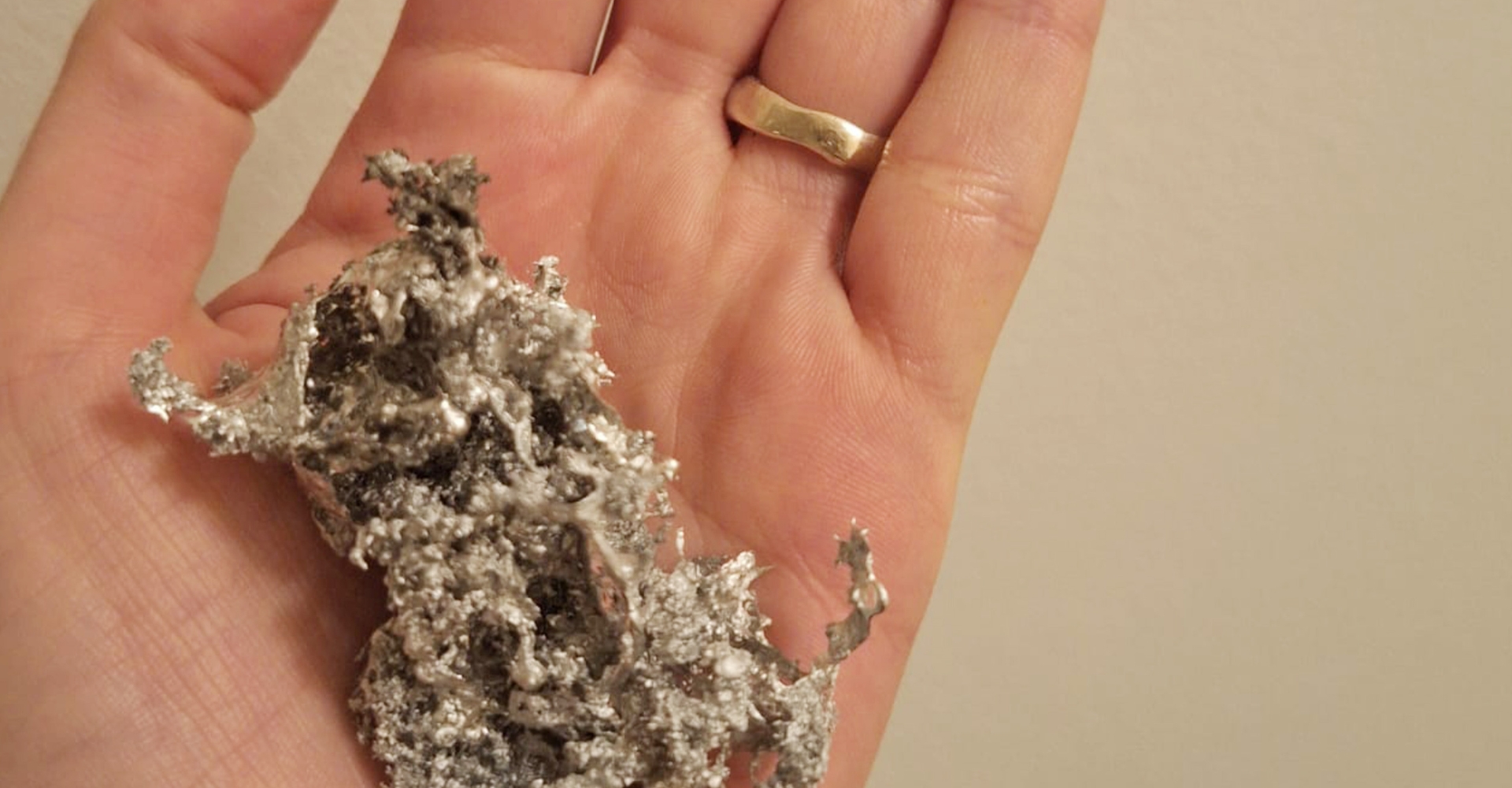A device between divination and posthuman technology
An ancient divination practice meets reuse technology in “A Taken Hand,” a speculative device that challenges the division between human and machine, past and future. Made from discarded materials, this tool revives molybdomancy—the ritual of interpreting molten metal shapes in water—offering a contemporary version that invites reflection on spirituality, technology, and posthuman relationships
At the core of “A Taken Hand” lies an ancient divination practice: molybdomancy. Used for centuries across Mesopotamia and other cultures, this technique involved melting lead and pouring it into water, allowing the solidified metal to take forms that could be interpreted by a gifted individual. Often performed by women regarded as custodians of mystical knowledge, this ritual was believed to ward off the evil eye and negative energies from the human body.
Adi Friedman and Ceren Sözer reclaim this ancient method, transforming it into a contemporary research tool that merges tradition with technological experimentation. “A Taken Hand” is a device built from discarded electronic components, repurposed and assembled to create a posthuman divination machine. This choice is not merely aesthetic but serves as a form of resistance against neoliberal production and hyper-consumerism. The object itself embodies a politics of reuse and repair, countering the logic of disposability.
The project’s name, “A Taken Hand,” references the tradition of passing down knowledge through touch. In traditional medicine and shamanic rituals, hands are the primary healing tools, and knowledge transfer often occurs through a symbolic gesture: taking the master’s hand to absorb their wisdom. Similarly, this machine functions as a “kin-making” device, where knowledge is transmitted not only between humans but also among humans, machines, and materials.
Inspired by Donna Haraway’s “A Cyborg Manifesto,” a foundational text in posthumanist and feminist thought, “A Taken Hand” deconstructs rigid divisions between human and non-human, nature and culture, machine and organism. In this perspective, technology is not merely an instrument of capitalist exploitation but a space of relationships and co-creation—a site for unexpected alliances between life forms and materials.
Through “A Taken Hand,” divination becomes an experiment in collaboration with uncertainty. The device is not designed to provide clear-cut answers but to invite users to dwell in ambiguity, to explore the indeterminate without the need to translate the experience into immediate function. In an era driven by speed and efficiency, this machine resists the commodification of knowledge and spirituality, reaffirming the value of intuition and the connection between seemingly disparate elements.
Thus, the encounter between molten metal, water, and electronic waste becomes a contemporary ritual where past and future intertwine, and the human merges with the non-human in a process of continuous metamorphosis.
PROJECT REALIZED THANKS TO
Baltan Laboratories
